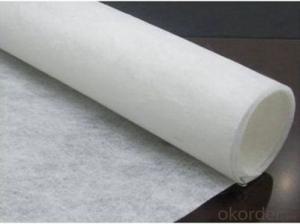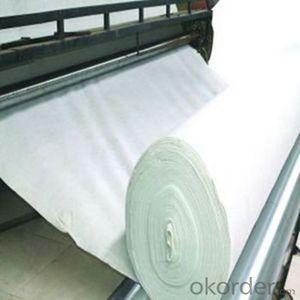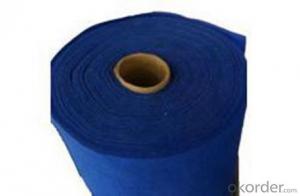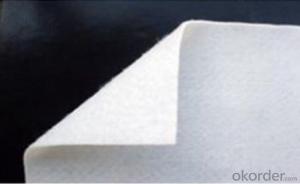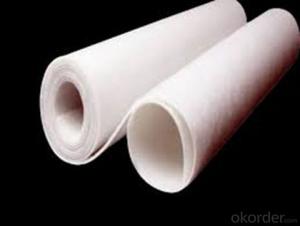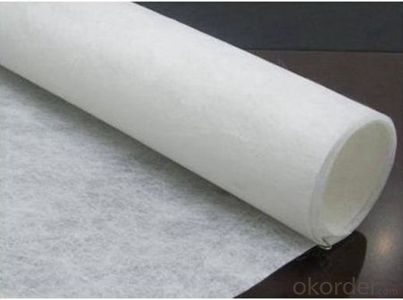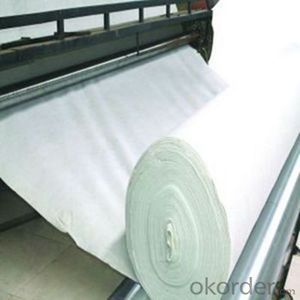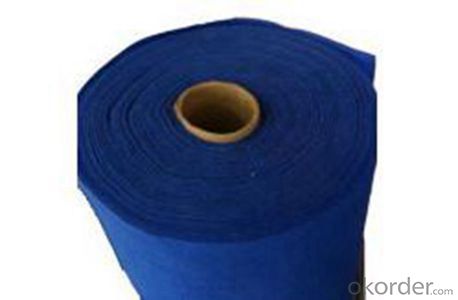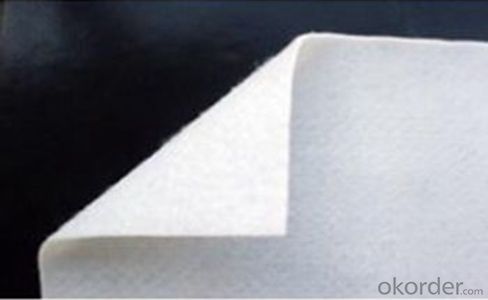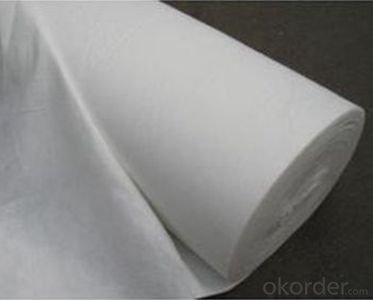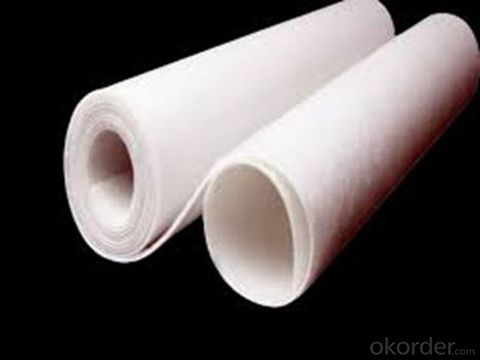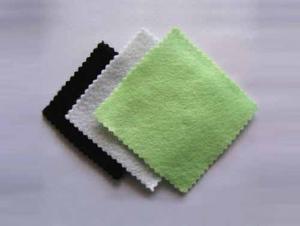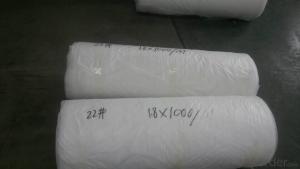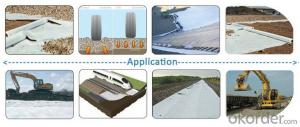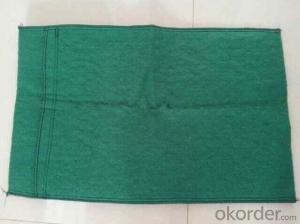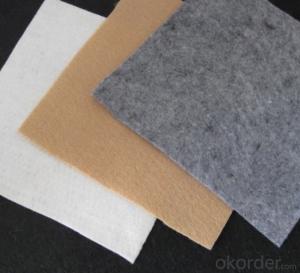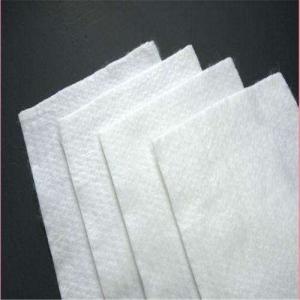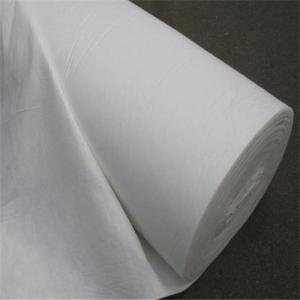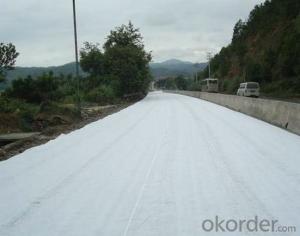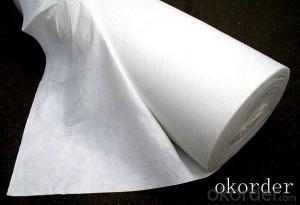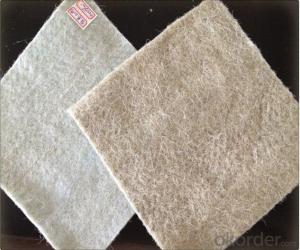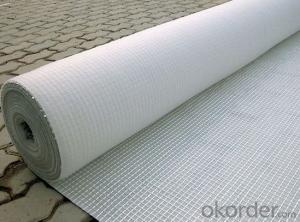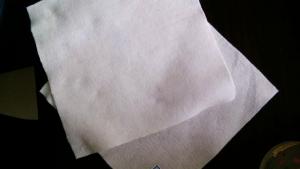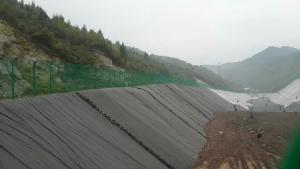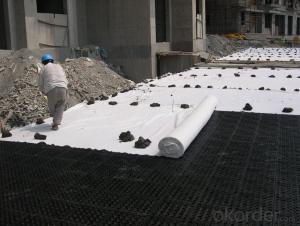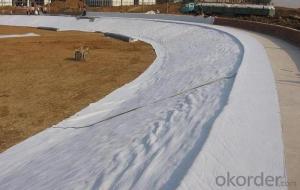Malla Geotextil No Tejido PP&PET 100-500g/m2 para Construcción de Carreteras
- Loading Port:
- China main port
- Payment Terms:
- TT OR LC
- Min Order Qty:
- 2000 m²
- Supply Capability:
- 500000 m²/month
OKorder Service Pledge
OKorder Financial Service
You Might Also Like
Specification
Product Description
Woven Geotextile Introduction:
Woven Geotextile is permeable fabrics which, when used in association with soil, have the ability to separate, filter, reinforce, protect or drain.
Woven Geotextile Features:
1.High Strength
2.Low Elongation
3.Optimum Permeability Characteristics
Woven Geotextile Application:
1.Roadway Separation
2.Railroad Stabilization
3.Subsurface Drainage
4.Containment
5.Temporary Liners
Woven Geotextile Technical Parameter:
20-15 | 30-22 | 40-28 | 50-35 | 60-42 | 80-56 | 100-701 | |
Break Strength KN/m≥(LD) | 20 | 30 | 40 | 50 | 60 | 80 | 100 |
Break Strength KN/m≥(TD) | 15 | 22 | 28 | 35 | 42 | 56 | 70 |
Break Elongation %≤(LD,TD) | 28 | ||||||
Trapozoidal Tearing Strength KN≥(LD) | 0.3 | 0.45 | 0.5 | 0.6 | 0.75 | 1.0 | 1.2 |
Burst Strength KN≥ | 1.6 | 2.4 | 3.2 | 4.0 | 4.8 | 6.0 | 7.5 |
Vertical Permeability Coefficient cm/s | 10-1-10-3 | ||||||
Sieve Size(O95.)mm | 0.08-0.5 | ||||||
Mass Weight g/m2 | 120 | 160 | 200 | 240 | 280 | 340 | 400 |
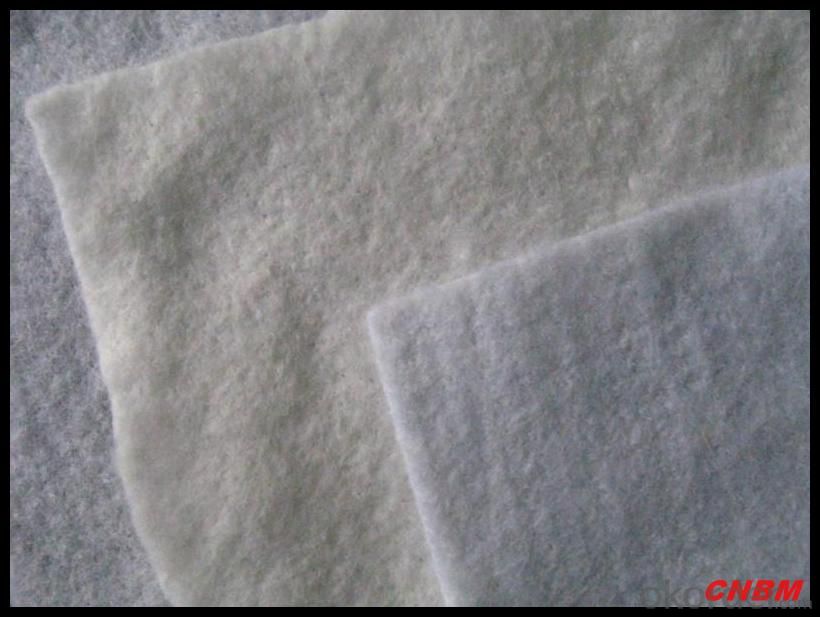
Function
The main function of these geotextiles is to offer separation, filtration and primarily protection,
• Separation and stabilization in road and railway construction
• Prevention of soil movement in erosion control measures
• Cushioning and protection in many containment projects.
Advantages
1) Isolation
The use of geotextile different physical properties (particle size, distribution, density and thickness, etc.) materials (such as soil and sand and gravel soil, soil and concrete, etc.) for isolation. So that two or more materials are not loss of inter-and non hybrid,to maintain the overall structure of the material and functions of the structures is to strengthen the load bearing capacity.
2) Filter
When the water from fine materials into the soil layers of rough material, the use of acupuncture geogextile good air and water permeability, so that the water flow through, and effective interception soil particles, spinning, the small stone so as to maintain the stability of the soil and water projects.
3) Drainage
Acupuncture geotextile is a good hydraulic material, which can from a soil internal drainage channel, soil structure and excess liquid gas emissions.
4) Reinforced
Acupuncture use of geotextile to enhance soil and the tensile strength of the antideformation ability to increase the stability of the building structure in order to improve the quality of the soil.
5) Protection
Will focus on effective stress-proliferation, transfer or broken down by external force to prevent the soil and damage.
6) Closed
Acupuncture geotextile and other materials (primarily asphalt or plastic film) with the formation of impermeable layer of insulation layer. (Mainly used for road resurfacing and repairing, etc.)
Packaging & Shipping
Packing: PLASTIC FILM INSIDE, AND WOVEN BAG OUTSIDE
Shipping: About 15 days after receipt the deposit
pecifications
geotextile fabric
permeability,filtration,easy for construction
ISO and CE certificate
Good quality and competitive price
Our Service
Quality assurance
1.On a regular basis or as per your request,we entrust national testing agencies to conduct quality inspections
2. Strictly in accordance with the ISO9001-2008 international quality system standard,we monitor and manage the whole process throughout production,quality testing,and measurement to ensure product quality
3. For quality-related construction delay or substandard construction(except for damage or losses due to customer’s responsibility or irresistible natural disasters),we have refunding,replacement,and repair services.We will respond to customers’ feedbacks on quality issues within 24 hours.
After-sales service
1.In order to provide customers with comprehensive technical support,we will provide technical and other related information upon request in a timely manner.
2.In required,we will appoint specialized technicians to the construction site to give technical trainings to construction people,and offer technical guidance throughout the whole construction process.
3.For damage due to shipment and delivery,after we receive the complaint,we will check the issure through provided pictures and videos.If our responsibility is confirmed,we wil offer free replacement.
4.When the construction is completed,as your request,our technical staff may participate in the final acceptance.
FAQ:
Q: What kind of payments does jenor support?
A: T/T, L/C, Cash are accepted.
Q: Do you charge for the samples?
A: Accordeing to our company policy, the samples are free, we only charge the freight fee. And we will return the freight fee during the next order.
Q: Can you produce according to customers' design?
A: Sure, we are professional manufacturer, OEM and ODM are both welcome.
Q: Do you have other products?
A: Yes, please check the pictures:
- Q: 300g / m2 geotextile package is what it means
- 300g / m2 Geotextile: refers to the weight of 300g per square meter (model) 300g / m2 geotextile package: refers to the outsourcing; with 300g of geotextile to wrap something; for example: With 300g / m2 geotextile wrapped gravel. The
- Q: Can geotextiles be used in the construction of artificial ponds?
- Yes, geotextiles can be used in the construction of artificial ponds. Geotextiles are commonly used as a lining material to provide stability, prevent erosion, and control water flow in various construction projects, including artificial ponds. They can help to separate different soil layers, reinforce the pond walls, and provide a barrier to prevent water leakage.
- Q: How do geotextiles improve soil stability?
- Geotextiles improve soil stability by providing reinforcement and separation. They prevent soil erosion, retain moisture, and distribute loads, ultimately enhancing the overall strength and stability of the soil.
- Q: What glue glue is used at the seams of the impervious geotextile
- What glue glue is used at the seams of the impervious geotextile
- Q: Can geotextiles be used in coastal revetment projects?
- Yes, geotextiles can be used in coastal revetment projects. Geotextiles are often employed as a protective layer or a filter between the revetment structure and the native soil, helping to prevent erosion and stabilize the coastline. They can enhance the overall stability and longevity of coastal revetments while allowing for proper water drainage.
- Q: What are the factors to consider when selecting geotextiles for a specific project?
- When selecting geotextiles for a specific project, there are several factors to consider. These include the project requirements and objectives, the type and intensity of loads the geotextiles will be subjected to, the site conditions and soil characteristics, the desired lifespan of the geotextiles, and the environmental considerations. Additionally, factors such as the cost, availability, and compatibility with other materials should also be taken into account.
- Q: How do geotextiles improve the stability of slopes?
- Geotextiles improve the stability of slopes by providing reinforcement and erosion control. They are placed within the slope to enhance its strength, prevent soil erosion, and increase overall stability. The geotextiles act as a barrier, distributing the forces exerted on the slope and reducing the potential for sliding or failure. Additionally, they can promote water drainage, preventing the accumulation of excess water that may weaken the slope. Overall, geotextiles play a crucial role in enhancing the stability and longevity of slopes.
- Q: Can geotextiles be used in dam construction?
- Yes, geotextiles can be used in dam construction. Geotextiles are commonly used as a part of the filter and drainage system in dam construction projects to enhance stability, prevent soil erosion, and improve overall performance of the structure. They can help manage water flow, reinforce the soil, and provide long-term protection against erosion and piping.
- Q: In the laying of composite geotextile water layer, what is wf115-0.2mm type
- Supply of composite geotextile, geomembrane.
- Q: Can geotextiles be used in erosion control on steep slopes?
- Yes, geotextiles can be used in erosion control on steep slopes. Geotextiles are specially designed fabrics that are used to stabilize soil and prevent erosion. They can be installed on steep slopes to reinforce the soil, reduce water flow, and promote vegetation growth, all of which help to prevent erosion and maintain slope stability.
Send your message to us
Malla Geotextil No Tejido PP&PET 100-500g/m2 para Construcción de Carreteras
- Loading Port:
- China main port
- Payment Terms:
- TT OR LC
- Min Order Qty:
- 2000 m²
- Supply Capability:
- 500000 m²/month
OKorder Service Pledge
OKorder Financial Service
Similar products
Hot products
Hot Searches
Related keywords
